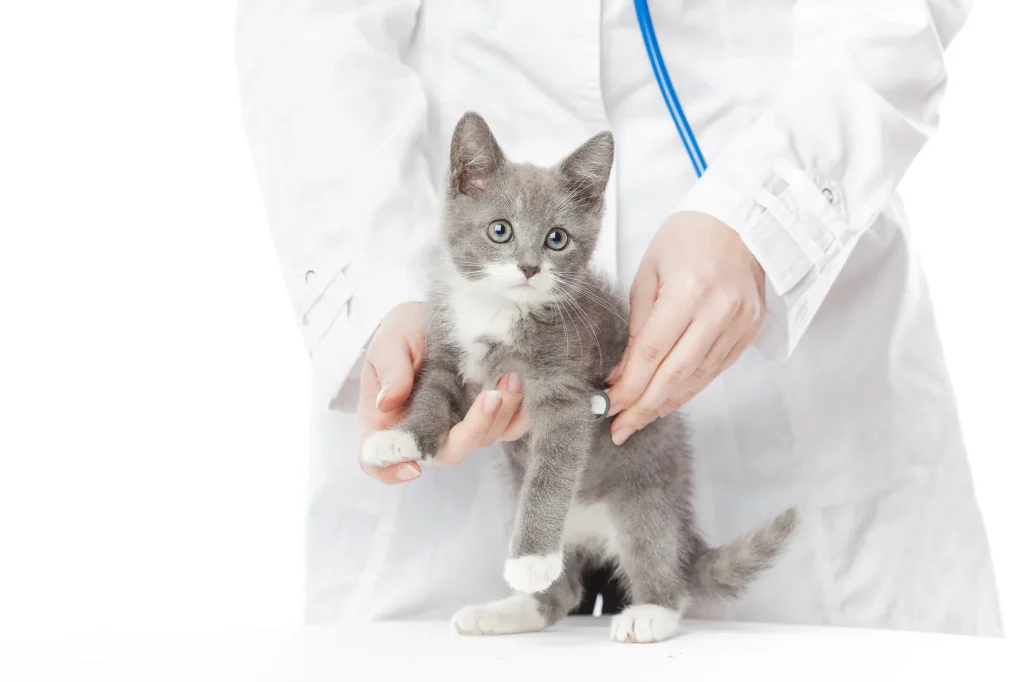Feline Infectious Peritonitis (FIP) is widely recognized as one of the most lethal infectious diseases affecting cats. This disease is caused by the feline coronavirus (FCoV) and poses a higher risk of fatality for cats under the age of 2. FIP is notorious for its complexities during the diagnosis stage, as there is a lack of specific clinical signs or laboratory changes that can definitively confirm the disease. Veterinarians must possess the expertise to differentiate between various diagnostic methods and tests for accurately diagnosing FIP. It is important to note that the FCoV virus itself is not necessarily harmful unless it progresses into FIP, which occurs in approximately 10% of cases.
There are two forms of FIP, namely dry and wet. It is worth noting that certain cats may experience symptoms from both forms. The dry form of FIP results in infections and inflammatory issues, such as lesions, in different internal organs of the cat. Conversely, the wet form is characterized by the accumulation of fluid in the abdomen.
Which cats are at the highest risk of developing FIP?
Cats residing in crowded environments such as rescue groups, shelters, and catteries, as well as those who have recently undergone a stressful situation, are particularly susceptible to FIP. The virus can be transmitted through fecal-oral contact, including sharing bowls and litter boxes.
Can Kittens Contract FIP?
Kittens are susceptible to contracting FIP from the early stages of their lives. Moreover, they are 2.5 times more vulnerable to infections due to higher viral loads in their bodies.
Is FIP Treatable?
Historically, FIP has been deemed a terminal and end-stage disease due to the lack of effective medications. However, recent advancements have provided promising treatments that can greatly improve the chances of survival for infected cats.
How long can the FIP virus stay in a cat’s body?
The FIP virus can remain in a cat’s body for varying durations. Some cats have been known to shed the virus for over 18 months, while others may shed it as early as the second day. Although the viral load may decrease over time, the susceptibility to reinfection remains unchanged. Interestingly, certain cats appear to be resistant to infection.
Is FCoV different from SARS-CoV2; the culprit of COVID-19?
FCoV and SARS-CoV2 are taxonomically distinct from each other based on their genomic classifications. FCoV belongs to the alpha coronavirus group and has two subtypes, I and II. On the other hand, SARS-CoV2 is the culprit behind COVID-19.
Diagnostic considerations for FIP:
When dealing with an animal that exhibits typical characteristics, diagnosing FIP may initially appear straightforward. However, it is important to note that tests utilizing effusion have a higher level of predictability compared to blood tests. It is crucial to highlight that if effusion is absent, diagnosing FIP becomes significantly more challenging. FIP can also manifest with systemic or organ-related symptoms, with fever being present in over half of the cases. Additionally, it is worth noting that some cases may not exhibit any abnormalities in serum biochemistry. There are several indicators that should be taken into account when considering FIP, such as the animal’s history of previous or current group housing. Age also plays a vital role in FIP diagnosis, as more than two-thirds of affected animals are under 2 years old. Gender is another important factor, as studies suggest that male and intact cats may have a higher incidence of infection. Furthermore, breeding of cats appears to be a significant contributing factor, with purebred cats being more susceptible to infection compared to mixed breeds. It is important to consider retroviral infections like FIV, as they can increase a cat’s susceptibility to contracting the FIP virus.
Different types of samples can be used for diagnosing FIP. These include effusions from the thoracic, abdominal, and pericardial areas, as well as blood samples such as whole blood, serum, plasma, and peripheral blood mononuclear cells. Additionally, tissues, aqueous humor, and cerebrospinal fluid can also be utilized as diagnostic sources. Furthermore, biopsies can be obtained for diagnostic procedures.
Physical findings associated with FIP include general clinical signs such as loss of appetite, weight loss, and failure to thrive in kittens. Lethargy and fluctuating fever are also commonly observed. Additionally, jaundice, pale mucous membranes, and swollen lymph nodes are considered nonspecific signs of FIP. On the other hand, there are specific signs related to the affected organs, such as abdominal symptoms like diarrhea, enlarged lymph nodes, abdominal masses, and fluid accumulation. Respiratory issues may manifest as difficulty breathing or rapid breathing. FIP can also affect the heart, leading to heart failure or cardiac tamponade. Involvement of the neurological system may result in abnormal behavior, aggression, shyness, lack of coordination, vision loss, seizures, and paralysis. Furthermore, FIP can also affect the reproductive and ocular systems.
Scientific Writer: MedBrief
References
- Thayer V, Gogolski S, Felten S, Hartmann K, Kennedy M, Olah GA. 2022 AAFP/EveryCat Feline Infectious Peritonitis Diagnosis Guidelines. Journal of Feline Medicine and Surgery. 2022;24(9):905-933. doi:10.1177/1098612X221118761
- WebMD

